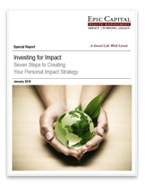Market Update: Monday March 23, 2020
Mar 23, 2020

Stocks pared overnight losses after Fed goes “all in” again. Stocks reversed big losses overnight in the futures market after initial disappointment that policymakers in Washington, DC, could not reach an agreement on a stimulus deal on Sunday night was followed by more central bank support.
The Senate proposal is reportedly in the $1.5 trillion range in size and our sources in Washington suggest passage today is very likely, despite several members of the Senate being in quarantine and one, Senator Rand Paul of Kentucky, having contracted the illness. The agreement, combined with the Federal Reserve’s (Fed) shock and awe response this morning (more below) will help cushion the blow of the oncoming recession.Many jobs will unfortunately be lost during this crisis, but these efforts may save some.
Fiscal policy bazooka is on the way. We don’t know the specifics of the package, but we do know it will represent roughly 6% of US gross domestic product and will include direct payments and tax relief for consumers and a substantial lending facility backed by the US Treasury to help cushion the blow for impacted businesses. The failure of the Senate’s procedural vote followed the typical path of these negotiations and may lead to more compromises today, including more worker protection clauses and more restrictions on loans initiated by the Treasury. We will discuss today on the LPL Research blog.
Fed not out of ammunition just yet. The Fed this morning announced open-ended asset purchases in a historic aggressive attempt to mitigate disruptions in financial markets and re-establish free flow of credit to consumers, businesses, and state and local governments. The first piece of today’s new policy response from the Fed, essentially “QE infinity,” will enable the central bank to buy as many securities as needed to stabilize those markets. The next phase, which will accompany the stimulus working its way through Congress, will provide a Main Street lending facility to help preserve as many jobs as possible over the next 60 to 90 days as the crisis plays out.
What is a circuit breaker? Multiple times over the past two weeks investors have been greeted with something they haven’t seen in years, a circuit breaker. In the simplest since, this is a pause in trading after a significant drop in the stock market. We examine this new development more in detail Circuit Breakers Explained.
Tags: Current Events, Investing
More Insights
Losing a spouse is a stressful transition. And the added pressure of having to settle the estate and organize finances can be overwhelming. Fortunately, there are steps you can take to make dealing with these matters less difficult.
Ever hear of critical illness insurance? This isn’t standard-issue disability insurance, but a cousin of sorts. With people living longer, it is a risk management option entering more people’s lives.
Following Iran’s missile and drone strikes on Israel over the weekend and the apparent escalation likely in any Israeli response, stocks fell sharply during Monday’s trading session. We examine the latest developments in the Middle East conflict, how stocks have reacted historically to geopolitical events, and the possible impact on markets moving forward.
Did you buy U.S. Savings Bonds decades ago? Or did your parents or grandparents purchase them for you? If they’re collecting dust in a drawer, you may want to take a look at them to see if any of your bonds have matured. If your bonds have matured, that means they are no longer earning … Continue reading “How US Savings Bonds Work”
In baseball, three strikes and you’re out. With inflation, a third straight month of hotter-than-expected consumer inflation data nearly ruled out probabilities for a June rate cut yesterday (now less than a 25% chance, according to fed funds futures). The core Consumer Price Index (CPI) rose 0.4% in March, or 3.8% when compared on a … Continue reading “Market Update – Assessing the Prospect for a Pullback”
Services
Epic Capital provides the following comprehensive financial planning and investment management services: Learn More >


 Top of Page
Top of Page











